
Lufa Farms uses GE LEDs to produce locally grown food
Case File Facts
COMPANY
Lufa Farms Inc.
LOCATION
Montreal, Quebec, Canada
CROPS
Lufa Farms produces over 75 different varieties of vegetables, including tomatoes, cucumbers, sweet and hot peppers, leafy greens, microgreens, kale, herbs, radishes, celery, kohlrabi, broccoli, cauliflower, arugula, watercress, mustard, bok choy and kale. Lufa Farms has a membership of about 10,000 families called “Lufavores” in the Montreal, Quebec area. The company produces over 10,000 baskets for weekly deliveries within a 2-hour delivery drive time of its distribution warehouse.
BACKGROUND
Lufa Farms was incorporated in 2009. Company cofounder and CEO Mohamed Hage said the purpose of the company when it opened was to “grow food where people live in order to live more sustainably.”
“That is kind of the company’s mantra,” Hage said. “It’s to feed people in cities. We launched the company with the first greenhouse built in 2010-2011 in Montreal. It was the first commercial rooftop greenhouse. It was a 32,000-square-foot facility where we grew a variety of crops including tomatoes, cucumbers, peppers and lettuces.
“We started selling the vegetables directly to consumers. The customers would sign up and receive a weekly basket of vegetables.”
In 2013 a second rooftop greenhouse opened dedicated to the production of tomatoes. This 46,000-square-foot facility produces 10 different varieties.
Lufa Farms started harvesting in its largest and most advanced operation in 2017. The 63,000-square-foot rooftop greenhouse produces over 40 varieties of greens, including romaine, Boston, butterhead, red oakleaf and green oakleaf lettuces.
Hage said selling directly to consumers is a complicated process.
“Not only do we have to be an amazing grower, but we also have to be able to focus on being good in business,” Hage said. “The reason we chose to grow in rooftop greenhouses was because it was the only way that we could solve the problem of growing locally.
“The traditional food production system is broken. Farmers are far away from the cities, growing food that is going through a maze of channels that are not efficient and are very wasteful. There is a 30- to 40-percent food loss through those channels. There is also the degradation of the quality of food. Also, every person in that channel has to be compensated.”
Hage said selling directly to consumers ensures his customers receive the freshest food.
“For us being able to grow locally, in order to bring this amazing food to consumers, we had to bring the food directly to them on the same day to make sure they were receiving the freshest products,” he said. “It would have been a shame to put in the hard work and grow this amazing food and then find out later it was wasting away on the shelves of grocery stores.”
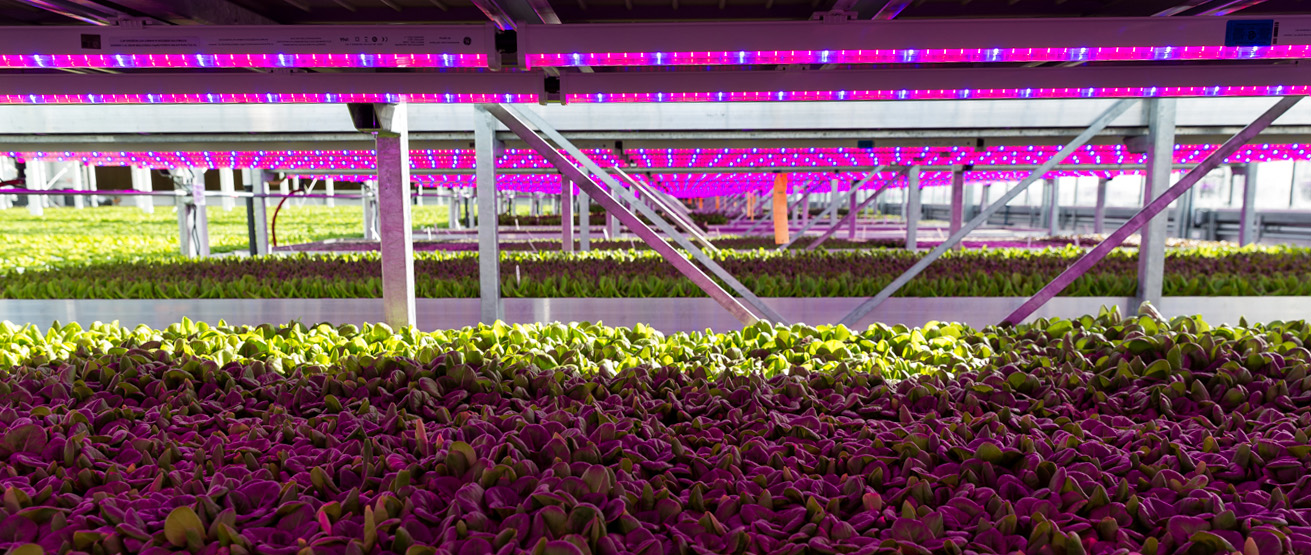
“Two-thirds of our seedling production is done under 100 percent artificial light. That was a big gamble. It has been very successful. It is a huge testament to where this technology is today. When we build our fourth facility we are definitely going to be looking at adding LEDs to our production areas.”
— Mohamed Hage, cofounder and CEO of Lufa Farms
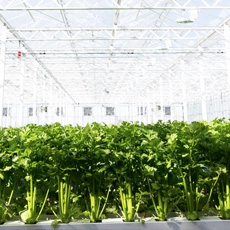
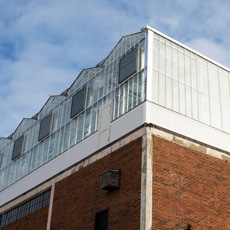
CHALLENGE
Other than the first greenhouse location, which sits on a warehouse where the food baskets are assembled, Hage said Lufa Farms’ second and third greenhouse locations have a minimal amount of additional space that is used by the company’s staff. He said the rest of the building space is used by other companies for offices or for manufacturing.
“Propagation is a very important part of greenhouse production,” Hage said. “We want to start off with good seedlings.”
Because of the limited space available, Hage said the company had to look at an alternative way to propagate the seedlings.
SOLUTION
The propagation area in Lufa Farms’ third location is in one greenhouse bay. All of the plants are started in a 5,000-square-foot floor area that has three levels of vertical production equipped with GE Arize Lynk LEDs.
“We were going to put the propagation area in the basement, but we wanted the top level of propagation to be lit by natural light so that we were able to get a comparison point between natural light and LEDs,” Hage said. “Only the top level receives natural light. The lower two levels are fully shaded by the upper level. So the lower levels are lit 100 percent by GE LEDs.
“Hort Americas and GE worked together to give us the recommended solution. Our knowledge about LEDs was minimal. We relied on their expertise and their suggestions and it has been shown to really work. I highly recommend it. A lot of growers don’t have enough experience to be able to make the decisions themselves. People like Chris Higgins at Hort Americas working with the engineers at GE can combine the grower’s knowledge and pull that together to make the best decision as to what kind of light concentrations, how many fixtures, etc., are needed”
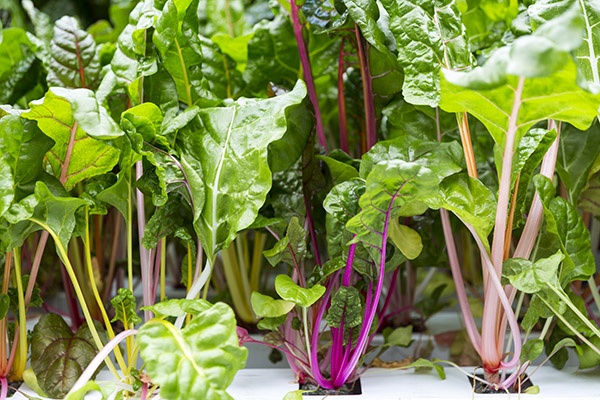
Lauren Rathmell, cofounder, greenhouse director and marketing director at Lufa Farms, shows Canadian prime minister Justin Trudeau how LEDs are being used for the propagation of seedlings in the company’s new rooftop greenhouse facility.
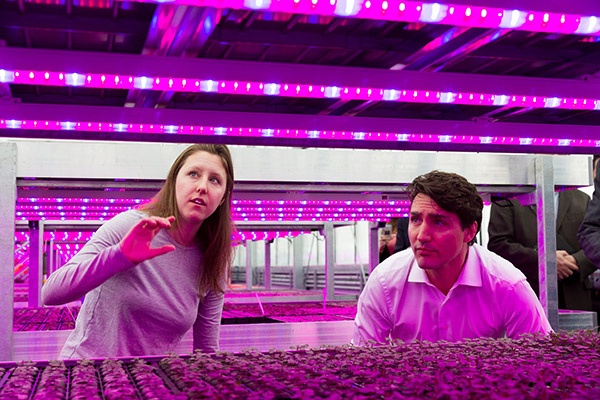
BENEFITS
Hage said he considered the investment in LEDs for the propagation area as a big gamble.
“We were initially reluctant to install LEDs,” he said. “This was our first major experience with LEDs. They have proven to be very successful and have worked very well.
“When we build our fourth facility we are definitely going to be looking at adding LEDs to our production areas. That is going to be another interesting step from a production perspective, not a propagation perspective. We can make this profitable as well.”
Hage said he is seriously considering switching from high pressure sodium (HPS) lamps to LEDs in future greenhouses that Lufa Farms builds.
“Obviously the cost is the major consideration,” he said. “What we want to do is establish two years of production under LEDs. We want to know if we can justify the initial cost with the energy savings that we would see over the first couple of years.”
For more: Hort Americas, infohortamericas@gmail.com
Click here for more case studies.


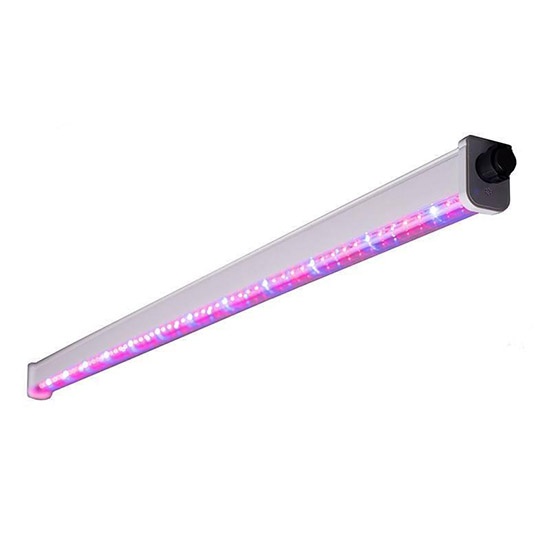
You must be logged in to post a comment.